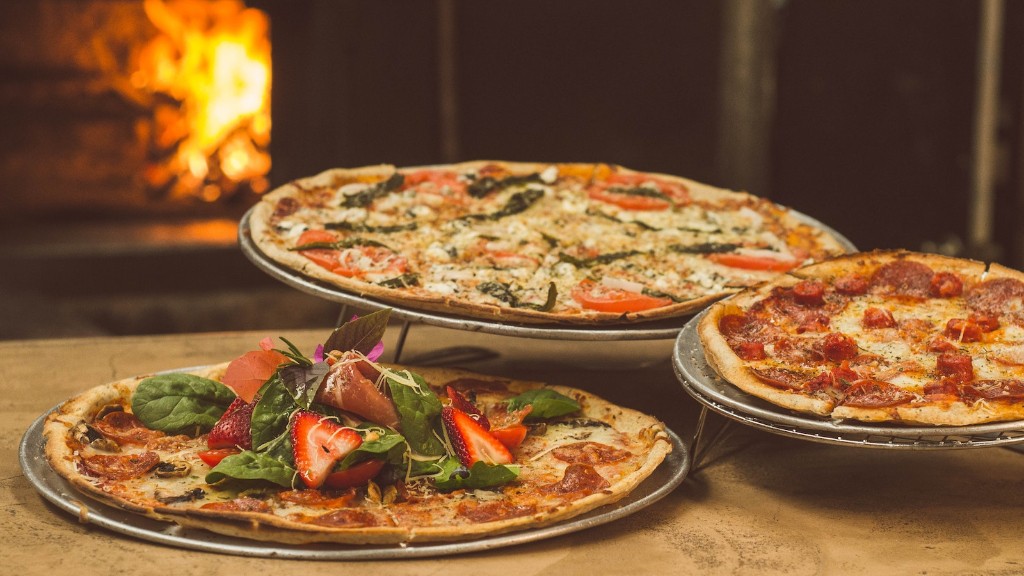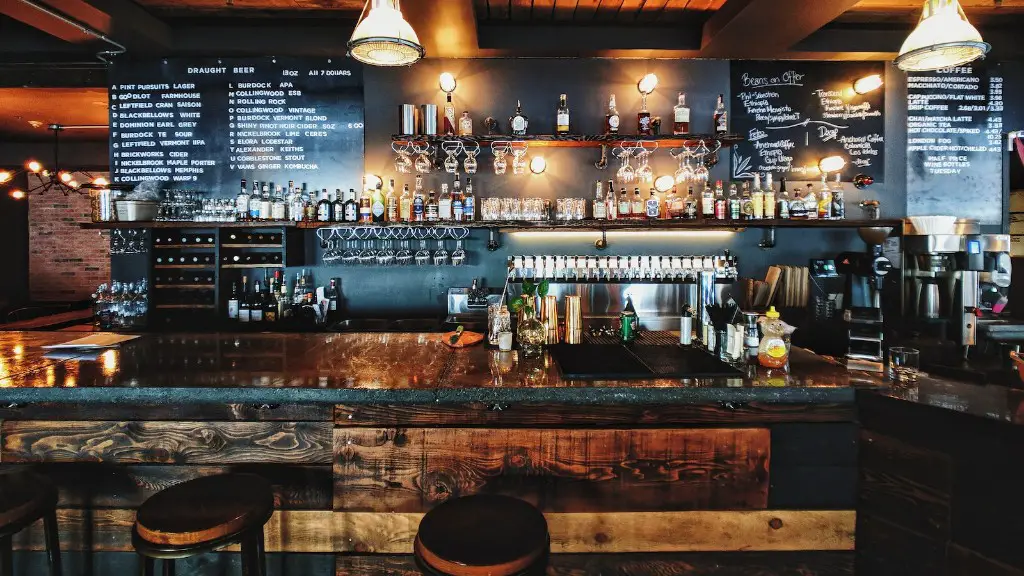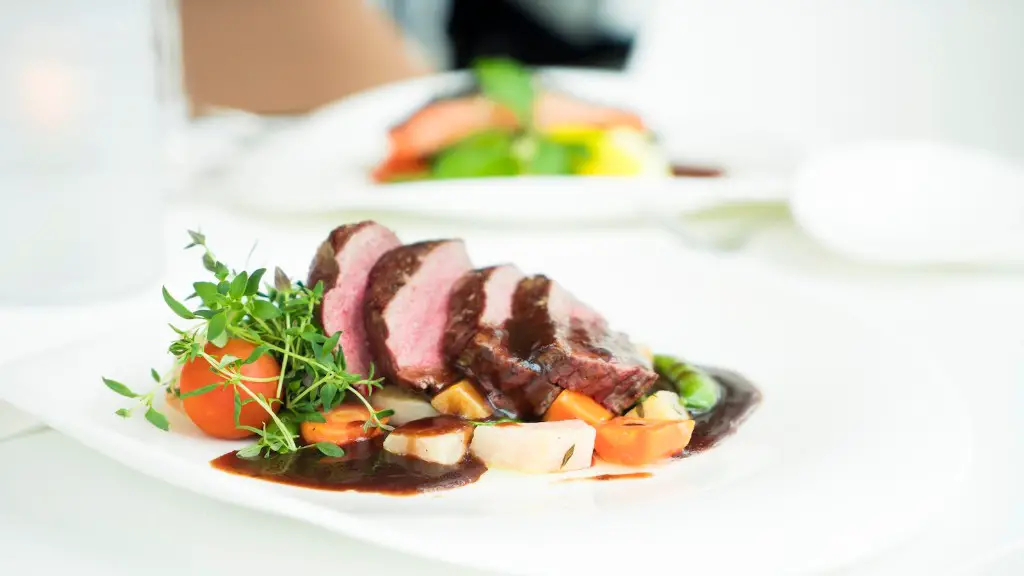A food restaurant is a commercial establishment that serves food and beverages to customers in exchange for money. The three main types of food restaurants are casual dining, fast food, and full-service. Each type of food restaurant has its own unique atmosphere, menu, and price range.
When opening a food restaurant, it is important to first decide on the type of restaurant you would like to open. Once you have decided on the type of restaurant, you will need to obtain the necessary permits and licenses, find a suitable location, and hire staff.
opening a food restaurant can be a daunting task, but with careful planning and execution it can be a successful venture.
There is no one-size-fits-all answer to this question, as the best way to open a food restaurant will vary depending on the unique circumstances of each situation. However, there are some basic steps that all restaurateurs should take when opening a new eatery, which include:
1. Choose a favorable location. The location of a restaurant can be one of the most important factors in its success or failure, so be sure to select a spot that is convenient for your target customers.
2. Create a winning concept. Whether it’s a focus on healthy eats, farm-to-table fare, or gourmet comfort food, your restaurant should have a clear concept that sets it apart from the competition.
3. Put together a top-notch team. A strong culinary team is essential for any successful restaurant, so be sure to hire experienced chefs, managers, and servers.
4. Promote your business. Be sure to let the community know about your new restaurant through marketing and advertising campaigns.
5. Pay attention to the details. From the décor and ambiance to the menu and service, every element of your restaurant should be well-thought-out and of the highest quality.
How much does it cost for a restaurant start up?
If you’re thinking about starting your own restaurant, it’s important to know that the startup costs can vary widely. Depending on the type of restaurant you want to open, and the location, you could be looking at spending anywhere from $175,500 to $750,000.
Of course, if the high startup costs are feeling a bit overwhelming, don’t get discouraged. There are ways to reduce the costs, like by using the ghost kitchen method. This is where you set up a kitchen that’s only used for preparing food for delivery or take-out, without the need for a dining area.
So, if you’re looking to open your own restaurant, do your research and come up with a solid plan to keep costs down. And, don’t forget, there are always creative solutions to help you save money.
If you’re thinking about starting a restaurant, there are a few things you need to do to get started. First, you need to choose a concept and brand for your restaurant. Then, you’ll need to write a business plan and obtain funding. Once you have the funding in place, you can choose a location and lease a commercial space. Once you have your space, you’ll need to get permits and licenses from the city. Finally, you’ll need to design your layout, find an equipment and food supplier, and get everything up and running.
How do I start my own food company
If you’re thinking about starting a food business, there are a few key things you need to do to get started on the right foot. Here’s an 8-step guide to help you get your food business up and running:
1. Make a solid Business Plan: This is the foundation of your business, so you need to make sure it’s well-thought-out and covers all the important aspects of your business.
2. Secure your financing: This will be one of the biggest hurdles to starting your food business, so it’s important to get it sorted early on.
3. Choose your location: This is a critical decision for any business, but especially for a food business. You need to make sure you’re in a good location with foot traffic and good visibility.
4. Design the layout of your space: This is important for both aesthetic and functional reasons. You want your space to look good and be easy to work in.
5. Choose your suppliers: This is another important decision that will affect the quality and cost of your food. Make sure you choose suppliers that you can trust to provide you with good quality ingredients.
6. Get your licences and permits: Depending on the type of food
If you’re looking to open a restaurant in Michigan, you’ll need to obtain a few different licenses. First, you’ll need a business license. You’ll also need a certificate of occupancy from the city or county where your restaurant will be located. Additionally, you’ll need a food handler’s license, also known as a food service license. If you plan on selling alcohol, you’ll need to obtain a liquor license permit. Finally, you’ll need to get a food facility health permit and a building health permit.
Do small restaurant owners make money?
There is a wide range of salaries for restaurant owners, according to Payscale.com. They can make anywhere from $31,000 to $155,000 a year, with the national average being around $65,000. These estimates show that there is a lot of potential for earnings in this field.
The cost of opening a restaurant varies widely based on a number of factors, including location, concept, size, materials, new or existing location, and equipment. On average, the overall cost to open a restaurant is between $100 and $800 per square foot, with costs varying based on location, concept, size, materials, new or existing location, and equipment.
Can you start a small restaurant with $10,000 dollars?
If you’re looking to start a ghost kitchen, you can expect to spend anywhere from $10,000 to $50,000 on startup costs. However, in some cities, you may be able to find provider options that are below $10,000. Keep in mind that the exact amount you’ll need to spend will vary depending on the size and scope of your operation.
If you’re looking for a cozy place to grab a bite or a drink, a bistro is the perfect spot. These small restaurants and bars typically have a warm and inviting atmosphere, making them ideal for a casual night out. Whether you’re looking for French fare or simple pub grub, you’re sure to find something to your taste at a bistro.
How much does it cost to own a small restaurant
when looking at the average startup costs for a restaurant in 2021, a number of factors can affect the overall cost. Depending on your location, equipment, furniture, and rent, the average startup cost to open a restaurant can range from as little as $175,000 to well over $700,000. While this may seem like a lot of money, it is important to remember that the average restaurant can generate upwards of $1 million in revenue each year. To ensure that your restaurant is successful, it is important to work with experienced professionals and develop a strong business plan. With the right team in place, your restaurant can be up and running in no time.
1. Food truck – Food trucks have become an especially popular way to get into the food business. You can sell a variety of foods from your truck, and you can even cater to special events.
2. Ice cream shop – Ice cream is one of the world’s most beloved desserts. Opening an ice cream shop can be a great way to get into the food business.
3. Cooking classes – Personal chef – If you love to cook, you can turn your passion into a business by offering cooking classes or becoming a personal chef.
4. Coffee shop – A coffee shop can be a great place to sell food and drinks. You can also offer a variety of pastries and baked goods.
5. Meal kits – Meal kits are becoming increasingly popular as people look for convenient, healthy, and affordable meal options.
6. Baked goods – If you have a knack for baking, you can sell a variety of baked goods, such as cookies, cakes, and breads.
7. Sauces – If you make a great sauce or salsa, you can sell it to restaurants as well as individuals.
There are many other food business ideas out there. These are just a few of the most popular
Is a food business profitable?
There are a number of things that a food business can do to increase profitability. One of the best ways to increase profitability is by taking advantage of economies of scale. This means producing quality goods at low prices. another way to increase profitability is by having the proper infrastructure and management in place.
This is a very competitive industry, but if you can maintain the quality of your food, you can still make good money. Taste and hygiene are very important in this business, so make sure you keep your food clean and fresh.
Can you sell food without a license in Michigan
This law is important because it helps to ensure that the food that we eat is safe. Businesses that process, pack, or sell food must be licensed in order to help ensure that they are following proper food safety procedures. businesses that are exempt from this law, such as those selling low-risk items like prepackaged foods, may still be subject to other food safety laws and regulations.
There are a number of licenses that are needed to start a restaurant in India. The most important license is the FSSAI license which is needed in order to serve food. Other licenses that are needed include an eating house license, health/trade license, liquor license, GST registration, environmental clearance license, fire safety license, and lift license.
How do I get a food handlers permit in Michigan?
To be certified, you must pass an ANSI/CFP nationally accredited exam once every 5 years. To prepare for the exam, most individuals take a class (in person or on-line) or self-study. Exams are proctored and must be taken either at an approved testing site or are given at the end of a course by an approved instructor.
The restaurant industry is one of the easiest fields for anyone to become extremely wealthy. No matter where you start in the restaurant industry, you can become a millionaire or more. The key is to find a niche and to focus on becoming the best at what you do. There are many opportunities for advancement in the restaurant industry, and if you are willing to work hard, you can achieve great success.
What type of restaurant is most profitable
1. Bar: In the restaurant business, bars have the highest profit margins. This is because customers typically spend more money on alcohol than they do on food.
2. Diner: The low cost of breakfast food ingredients increases the profit margin for diners. This is because customers typically spend less money on breakfast than they do on lunch or dinner.
3. Food Truck: The low overhead costs associated with food trucks allows them to have higher profit margins than traditional restaurants.
4. Delivery Pizzeria: Delivery pizzerias typically have high profit margins because they charge for delivery and customers typically order multiple pizzas at a time.
5. Pasta Restaurant: Pasta restaurants typically have high profit margins because they serve a low-cost dish that customers typically order multiple of.
6. Soup Kitchen: Soup kitchens have very high profit margins because they serve a low-cost dish that is in high demand.
There are a few key signs to watch out for that indicate a restaurant is in trouble. Firstly, if you’re not seeing a consistent flow of customers throughout the week, that’s a sign that people aren’t interested in what you’re serving. Secondly, if you’re food costs are consistently higher than your revenue, that’s a problem. And finally, if your staff turnover is high, that’s a sign that your restaurant is not a desirable place to work. If you’re seeing any of these signs, it’s important to take action immediately to turn things around. Otherwise, your restaurant is at risk of failing.
Warp Up
The first step is to develop a business plan. This will include an analysis of the restaurant industry, your target market, your competition, and your unique selling proposition. Next, you will need to secure funding for your restaurant. This can be done through loans, private investors, or crowdfunding. Once you have the necessary funding, you will need to find a suitable location for your restaurant. Once you have secured a location, you will need to obtain the necessary permits and licenses from your local government. Finally, you will need to hire staff and purchase supplies for your restaurant.
If you’re thinking of opening a food restaurant, there are a few things you need to keep in mind. First, you need to have a clear concept for your restaurant. What kind of food will you serve? What is your target market? What is your price point? Once you have a clear concept, you need to find a good location. It’s important to choose a location that is convenient for your target market and that has enough foot traffic to generate business. Once you’ve found a location, you need to start planning your menu and developing your branding. Branding is important because it will help you attract customers and create a loyal following.





